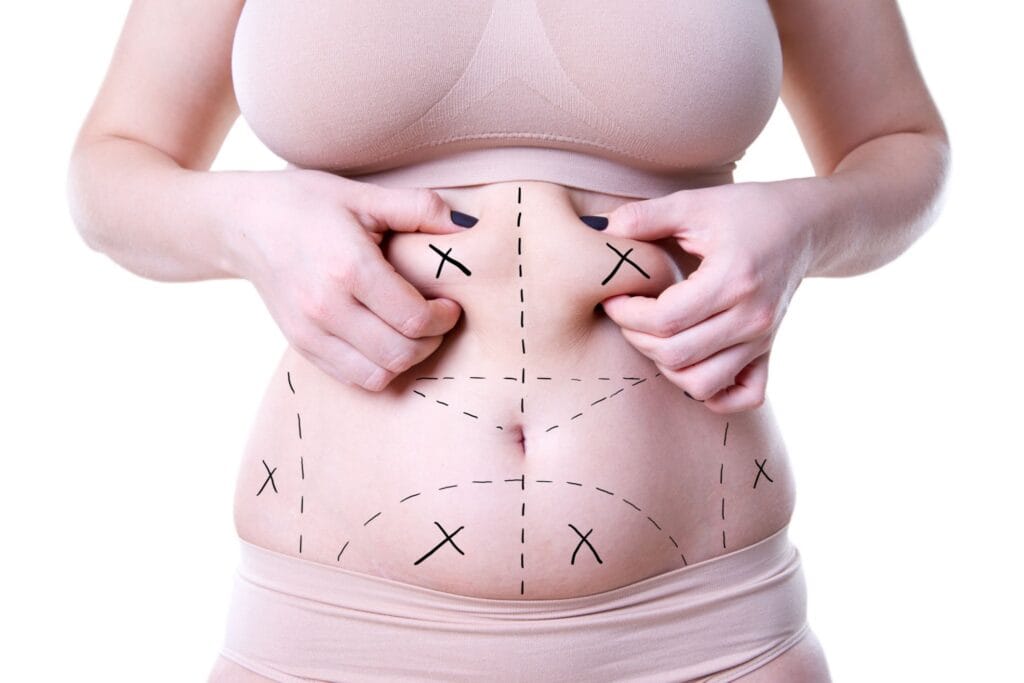Liposuction, while a transformative procedure, isn’t a limitless solution for fat removal. The amount of fat safely extracted during a single session is carefully determined by several crucial factors. This article clarifies the limitations and considerations surrounding liposuction volume to ensure realistic expectations and a safe outcome.
Table of Contents
Understanding Liposuction Limits
Liposuction isn’t designed for massive weight loss. It’s a body contouring procedure targeting localized fat deposits resistant to diet and exercise. The primary limitation is the body’s capacity to handle fluid shifts and the potential for complications associated with excessive fat removal. Overly aggressive liposuction can lead to serious adverse events, including fluid imbalances, infections, and skin irregularities. Therefore, a responsible surgeon prioritizes patient safety over achieving dramatic, immediate results.
The amount of fat that can be safely removed is individualized and depends on several factors, making a blanket statement about a specific volume impossible. A surgeon will assess your overall health, the areas targeted for liposuction, and your body’s constitution to determine a safe and effective treatment plan. This assessment is crucial for minimizing risks and optimizing results. Remember, the goal is a natural-looking improvement, not an extreme transformation in a single procedure.
Multiple procedures may be necessary to achieve desired results, especially for individuals with significant fat deposits. These procedures are typically spaced several months apart to allow for adequate healing and recovery. This staged approach minimizes risks and allows for a more natural and predictable outcome. Attempting to remove excessive fat in one session is not only risky but also counterproductive to achieving optimal results.
It’s crucial to understand that liposuction is not a substitute for a healthy lifestyle. Maintaining a balanced diet and regular exercise program post-procedure is essential for long-term results and overall well-being. The procedure is designed to enhance your body’s natural contours, not to replace healthy habits.

Factors Affecting Procedure Size
Several factors significantly influence the amount of fat that can be safely removed during a single liposuction procedure. Body mass index (BMI) plays a crucial role; individuals with a higher BMI may require multiple procedures to achieve their goals. The patient’s overall health, including any pre-existing conditions such as heart disease or blood clotting disorders, will also be carefully evaluated.
The areas targeted for liposuction also affect the volume that can be removed. Larger areas, such as the abdomen or thighs, typically allow for a greater volume of fat removal compared to smaller areas like the chin or knees. The surgeon’s expertise and experience in assessing individual patient needs are paramount in determining safe removal limits.
The type of liposuction technique used also plays a role. Tumescent liposuction, a commonly used method, involves infusing the treatment area with a fluid solution to reduce bleeding and swelling, allowing for a larger volume of fat removal compared to other techniques. However, even with tumescent liposuction, there are limits to the safe amount of fat removal.
Finally, the surgeon’s judgment is paramount. Experienced surgeons prioritize patient safety and will always err on the side of caution, recommending a staged approach if necessary, rather than risking potential complications from removing excessive fat in a single procedure. This conservative approach ensures optimal outcomes and minimizes risks.

Safe Volume Removal Guidelines
There’s no universal guideline for the maximum amount of fat that can be safely removed during liposuction. The safe limit is determined on a case-by-case basis, considering the factors mentioned previously. However, general guidelines suggest that removing more than 5-7 liters of fat in a single session is generally considered excessive and carries a higher risk of complications.
This volume limit is not absolute and can vary depending on the individual’s overall health, the areas treated, and the technique used. Experienced surgeons meticulously calculate the safe volume based on the patient’s specific circumstances. They use sophisticated techniques and monitoring to ensure the procedure remains within safe parameters.
Exceeding these limits significantly increases the risk of complications such as fluid imbalances, infections, and serious cardiac or pulmonary issues. The body’s ability to process the removed fat and fluid is crucial, and exceeding its capacity can lead to adverse events. Therefore, a conservative approach is always preferred.
Patient safety is the utmost priority. Reputable surgeons adhere to strict guidelines and utilize advanced techniques to minimize risks and ensure optimal outcomes. Open communication between the surgeon and patient is crucial in establishing realistic expectations and a safe treatment plan.

Realistic Expectations & Recovery
Liposuction is a powerful body contouring tool, but it’s not a magic bullet. It’s crucial to have realistic expectations regarding the achievable results. While it can significantly improve body shape and reduce localized fat deposits, it won’t eliminate all fat or result in dramatic weight loss.
The recovery period varies depending on the extent of the procedure and the individual’s response. Expect some swelling, bruising, and discomfort in the treated areas for several weeks. Compression garments are typically worn to minimize swelling and support the healing process. A gradual return to normal activities is recommended.
Post-operative care instructions must be followed meticulously to minimize risks and optimize healing. This includes adhering to prescribed medications, maintaining proper hydration, and following dietary guidelines. Regular follow-up appointments with the surgeon are essential to monitor progress and address any concerns.
Remember, the results of liposuction are gradual. The final outcome is typically visible several months after the procedure, once the swelling has completely subsided. Maintaining a healthy lifestyle, including a balanced diet and regular exercise, is crucial for long-term results and overall well-being.
The amount of fat safely removed during liposuction is highly individualized and depends on several crucial factors. Prioritizing patient safety and employing a conservative approach are essential for achieving optimal results and minimizing risks. Open communication with your surgeon and realistic expectations are key to a successful outcome.
Transform Your Confidence with Surgyteam!
Join the thousands of satisfied patients who have experienced the exceptional care and expertise of Surgyteam’s renowned plastic surgeons. Whether you’re seeking aesthetic enhancements or reconstructive surgery, our dedicated team in Antalya is here to provide you with the highest quality treatment and personalized care.


